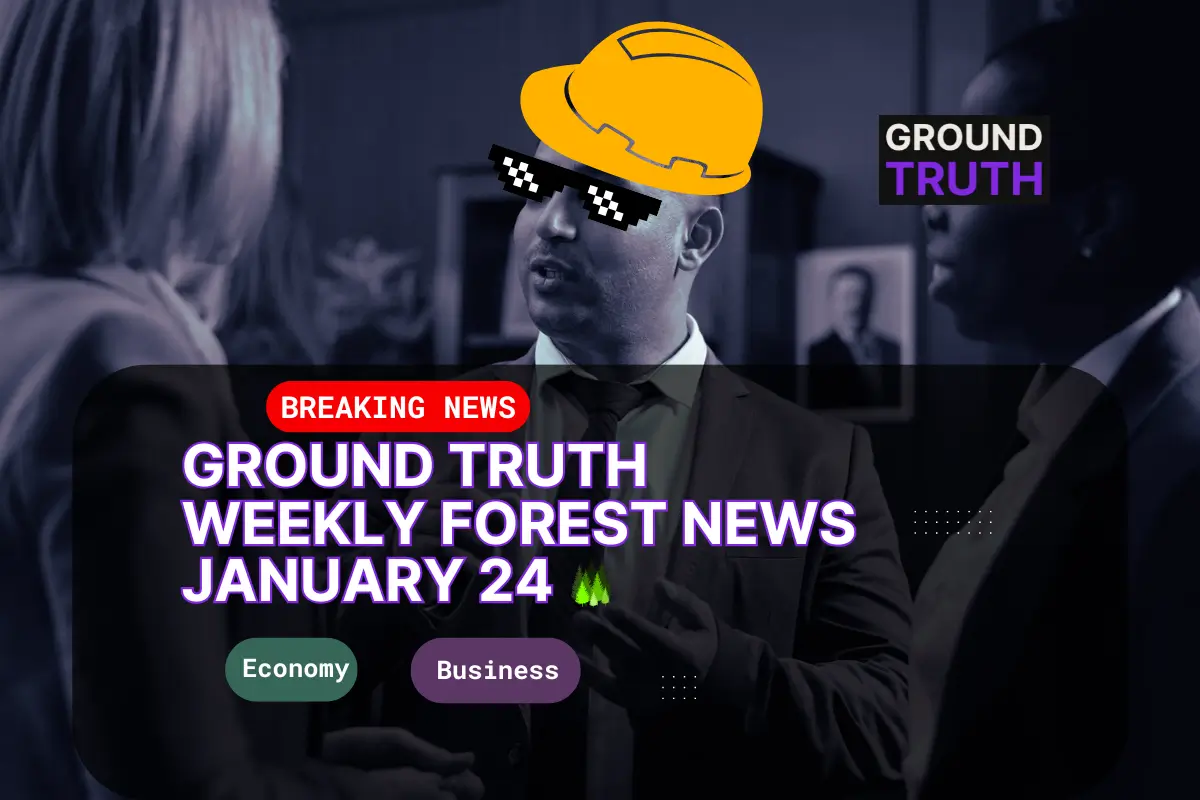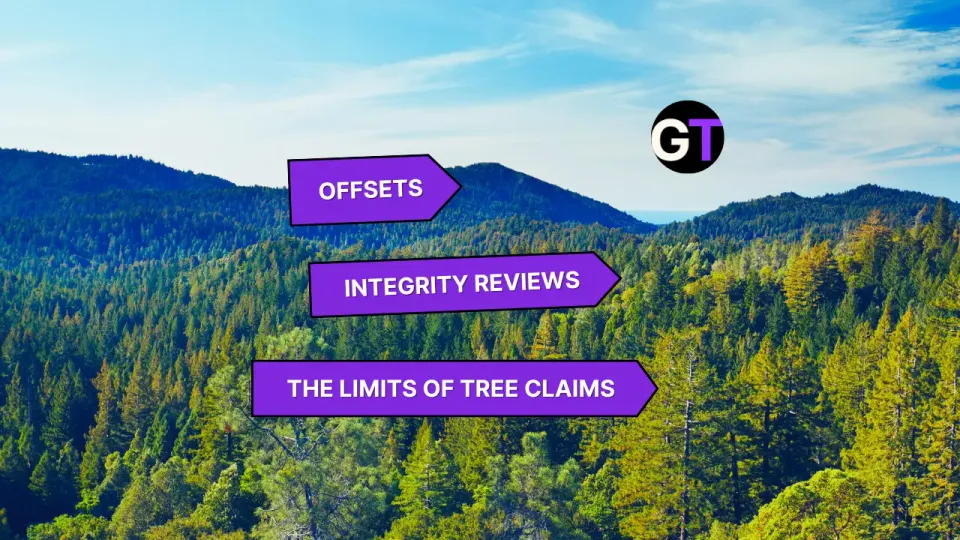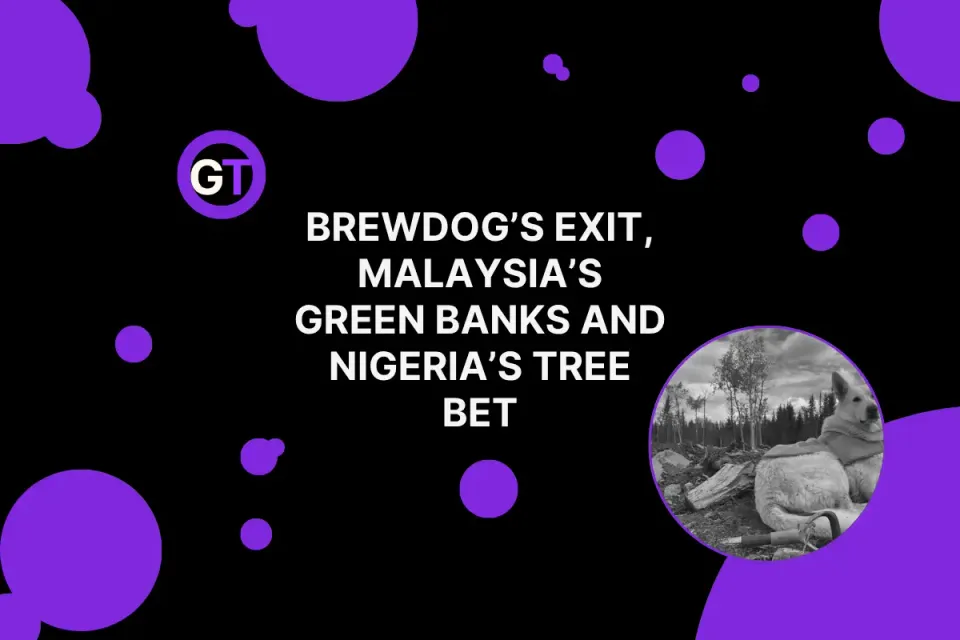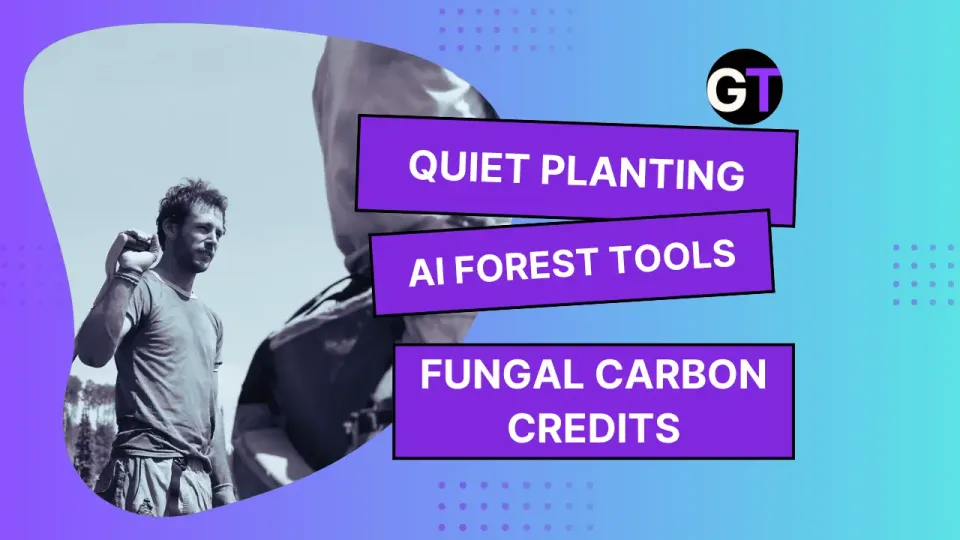Ground Truth Weekly Forest News January 24
Global reforestation efforts face hurdles but show promise through transparency, data-driven tools, community collaboration, and innovative funding.

Verra Responds to Renoster's Proposed Reforms for Carbon Markets
Elias Ayrey, PhD of Renoster recently submitted a list of suggestions to Verra for improving carbon credit systems, and the famous international platform has responded. While they support some suggestions, including flexible plans for sharing benefits instead of fixed revenue rules, they have resisted the full list of disclosures and structural reforms proposed by Ayrey. They claim this is because they want to protect sensitive business information.
Will the changes Verra has agreed to be enough to restore confidence in carbon markets?
👉👉 Read Renoster's "Fixing Verra" proposal
👉👉 Read Verra's response
Canada’s 2 Billion Trees Initiative Needs More Open Data to Succeed
Canada’s 2 Billion Trees initiative is a bold step toward reforestation, but a 2023 study by McPhee, Spearing and Loo reveals that success depends on closing critical data gaps. Challenges such as limited seed supply, inadequate storage facilities, and sparse long-term tracking of tree survival hinder efforts to plant trees effectively and adapt to local climates. The study calls for more open data systems to map seed sources, forecast supply and demand, and monitor reforestation outcomes over time.
Without sufficient data to guide decisions, large-scale reforestation risks inefficiency and missed opportunities. By investing in better data collection and sharing, Canada can plant smarter and build a more climate-resilient future.
What tools and strategies can help Canada collect the data needed to transform its reforestation efforts?
👉👉 Read our coverage on Ground Truth
Restored Ecosystems Show Soil Carbon Gains but Fall Short of Pristine Levels
A new study consolidating 41 meta-analyses has revealed that ecosystem restoration significantly increases soil organic carbon (SOC) stocks compared to degraded land, with average increases ranging from 25% in grasslands to 79% in shrublands. However, SOC levels in restored ecosystems remain below those of pristine ecosystems, with deficits of 14% to 50% depending on the ecosystem type.
Restoration strategies, such as active replanting and passive recovery (natural regeneration), showed no significant difference in effectiveness across most ecosystems, but wetlands exhibited unique challenges, with minimal SOC recovery. The study emphasizes the importance of conserving pristine ecosystems, as restoration alone cannot fully offset carbon losses from degradation.
What strategies could help ecosystems recover closer to pristine carbon levels while balancing conservation and restoration efforts?
👉👉 Read the study in Nature
This Week in Forest Finance: Grants and Projects Supporting Global Reforestation
This week highlights key funding initiatives driving reforestation worldwide. In Scotland, millions in public subsidies support large-scale woodland creation, while New York State offers grants of up to $750,000 for private landowners to establish forests.
The WALD Innovation Facility launched grants of €750,000 to €1.5 million for high-impact, nature-based projects, and the G20 Global Land Initiative is funding $5,000 to $15,000 restoration projects in developing nations. In Canada, $900,000 has been committed to restoring Ontario’s Ogoki Forest, advancing the 2 Billion Trees initiative. These efforts emphasize the growing need for funding, data-driven strategies, and collaboration to achieve reforestation goals.
How can funding programs better integrate local communities and biodiversity to ensure reforestation efforts are both impactful and equitable?
👉👉 Read our coverage on Ground Truth
Ghana Submits First Biennial Transparency Report Under the Paris Agreement
On December 28, 2024, Ghana successfully submitted its first Biennial Transparency Report and National Inventory Document to the UN Climate Change Secretariat. The report reveals that total greenhouse gas (GHG) emissions, including land use, land-use change, and forestry (LULUCF), reached 54,758.6 ktCO2e in 2022—a 214.3% increase from 1990 levels. The energy sector has been the largest contributor, accounting for 45.1% of emissions from 2016 to 2022, followed by agriculture (21.2%) and waste (17.8%).
Ghana’s updated Nationally Determined Contribution (NDC) sets a target of reducing net GHG emissions by 64,000 ktCO2e by 2030. This includes an unconditional reduction of 24,600 ktCO2e and a conditional reduction of 39,400 ktCO2e, dependent on international financial support. Achieving these goals will require an estimated $15.9 billion in funding, emphasizing the need for prioritizing green development pathways and securing international investments.
How can developing nations like Ghana balance economic growth with ambitious climate targets to meet international commitments?
👉👉 Read the report on UNFCC
Transparency Drives Lebanon’s Reforestation Success
Jouzour Loubnan, a Lebanese NGO, leads by example in reforestation with transparency, sharing data, survival rates, and methods through platforms like Restor.Eco. Combining seed conservation, agroforestry, and local engagement, the organization restores degraded landscapes while addressing challenges like economic instability and limited government support. Their focus on biodiversity, long-term maintenance, and community involvement highlights the need for reforestation efforts to go beyond tree planting to achieve lasting impact.
How can open data and community collaboration strengthen reforestation efforts in challenging regions?
👉👉 Read the full interview on Ground Truth
World Vision Mexico Completes Reforestation Project in Acapulco
World Vision Mexico (WVM) has completed the “Reverdeciendo Acapulco” project, restoring 444.5 hectares of land by planting 11,850 fruit trees in eight communities impacted by Hurricanes Otis and John. Running from March to December 2024, the project integrated environmental education and agroforestry, benefiting 359 children directly and 1,846 community members overall. It also established 198 agroforestry units, promoting sustainable livelihoods through training in soil conservation and organic fertilizers.
WVM has shared data from previous projects in Ethiopia, Bolivia, and India via Restor.Eco, and we hope to see their efforts in Acapulco added to the platform, continuing their commitment to openness and collaboration.
How can integrating reforestation with community education and sustainable livelihoods enhance long-term environmental resilience?
👉👉 Read more on Mexico Business News
👉👉 See World Vision's planting sites on Restor.Eco
ENAMES Uses Data-Driven Predictions to Save Forests in a Changing Climate
To combat the growing threats of climate change, wildfires, and deforestation, scientists are developing innovative reforestation strategies that look beyond traditional methods of planting local seeds. The U.S. Forest Service’s Experimental Network for Assisted Migration and Establishment Silviculture (ENAMES) uses data-driven tools like the Seedlot Selection Tool to forecast future climate conditions for forests. This approach allows foresters to plant a mix of tree species adapted not only to current conditions but also to potential climates decades or even a century from now.
By leveraging data to anticipate changes in temperature, drought, and rainfall, ENAMES aims to create more climate-resilient forests. Early results are promising, and if successful, these strategies could help forests survive—and thrive—well into the future.
How can predictive tools and long-term planning reshape the way we approach reforestation and forest conservation?
👉👉 Learn more about this on NPR
Madagascar’s Menabe Region Launches Ambitious Reforestation Campaign
On January 17, 2025, Madagascar launched its 2024-2025 reforestation campaign in the Menabe region, with a goal to reforest over 3,000 hectares of dry forests and mangroves. The kickoff event in Belo-sur-Tsiribihina included planting 18,000 seedlings across 10 hectares and raising environmental awareness to mobilize stakeholders. Menabe faces Madagascar’s highest deforestation rate, making intensified efforts essential to reversing land degradation. Local officials emphasized collaboration among communities, partners, and authorities as vital to achieving reforestation goals.
WWF, a key partner in the region, has a proven track record of transparency, publishing detailed restoration data on platforms like Restor.Eco. Last year, WWF restored 285 hectares in Menabe and aims to exceed that figure this season, reinforcing its commitment to sustainable forest management.
How can transparency and partnerships improve reforestation efforts in regions facing severe deforestation challenges?
👉👉 Read more here
👉👉 View WWF Madagascar's planting projects on Restor.Eco
Edited by Chris Harris

This work is licensed under a
Creative Commons Attribution 4.0 International License.




